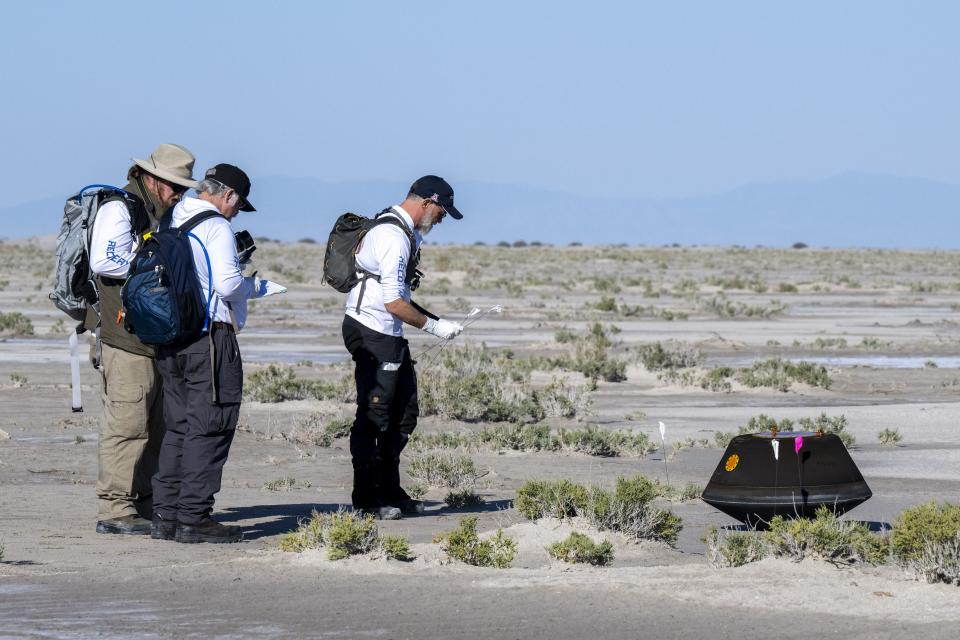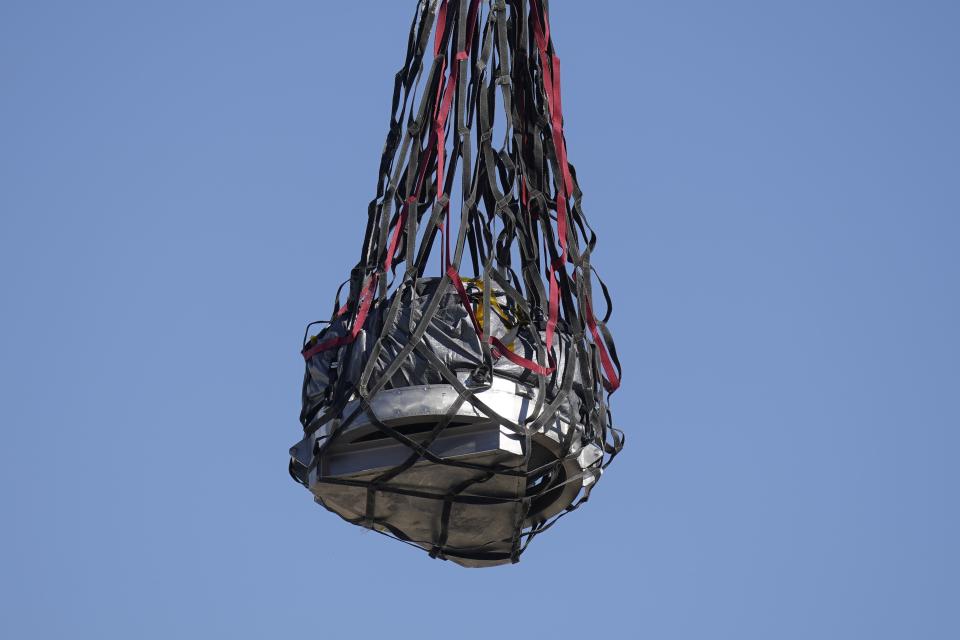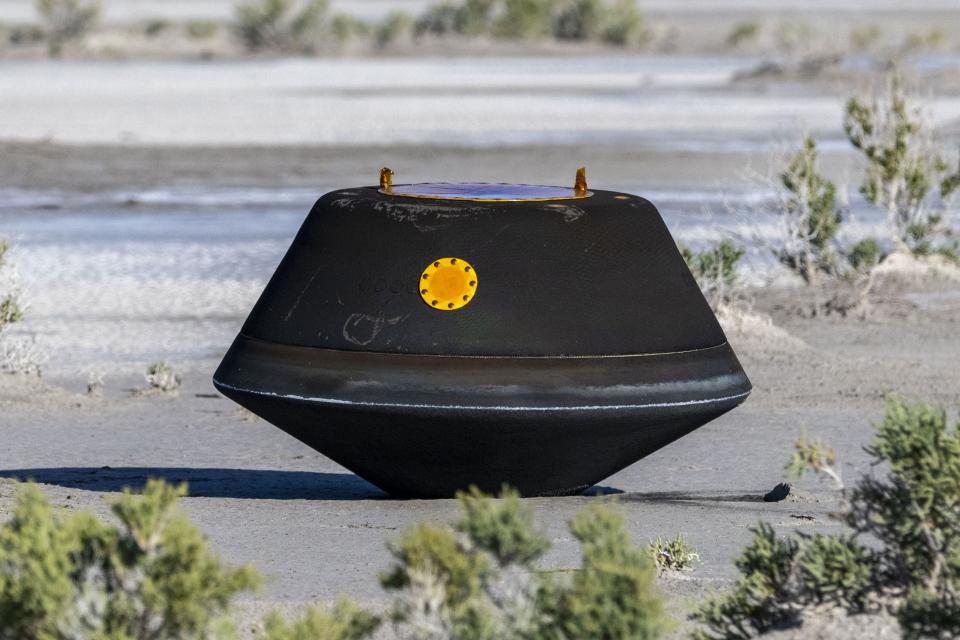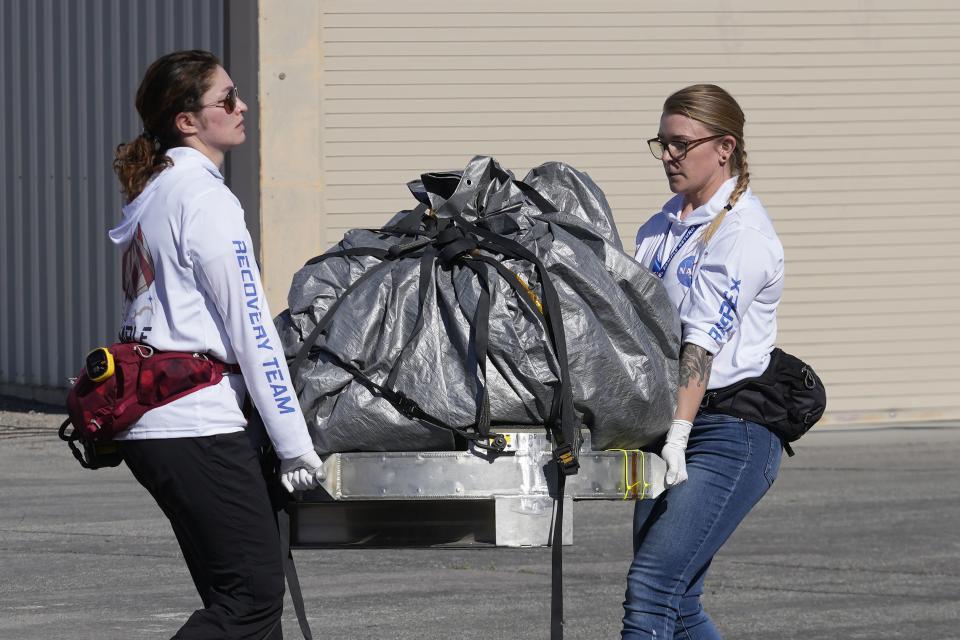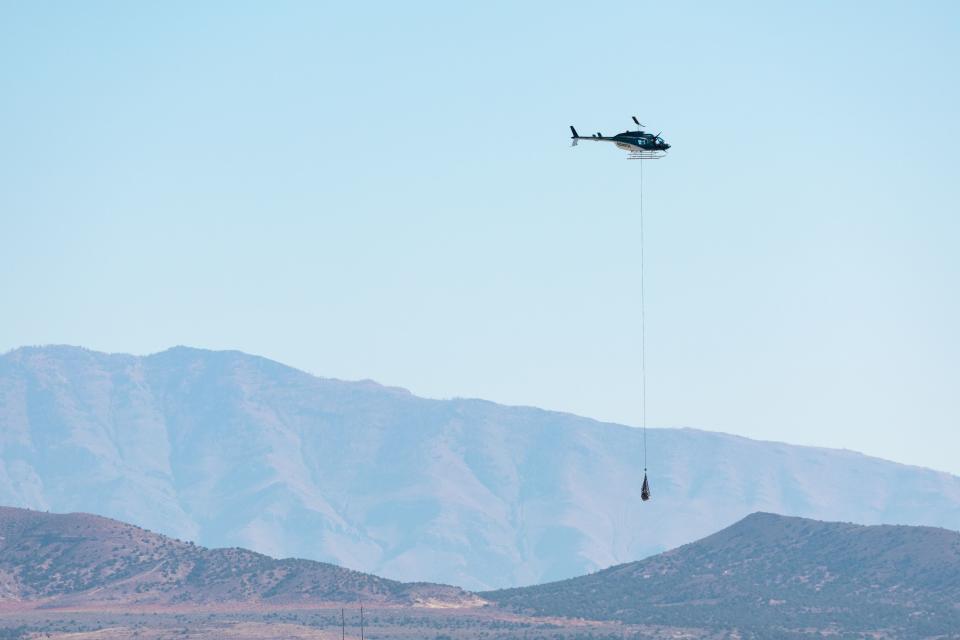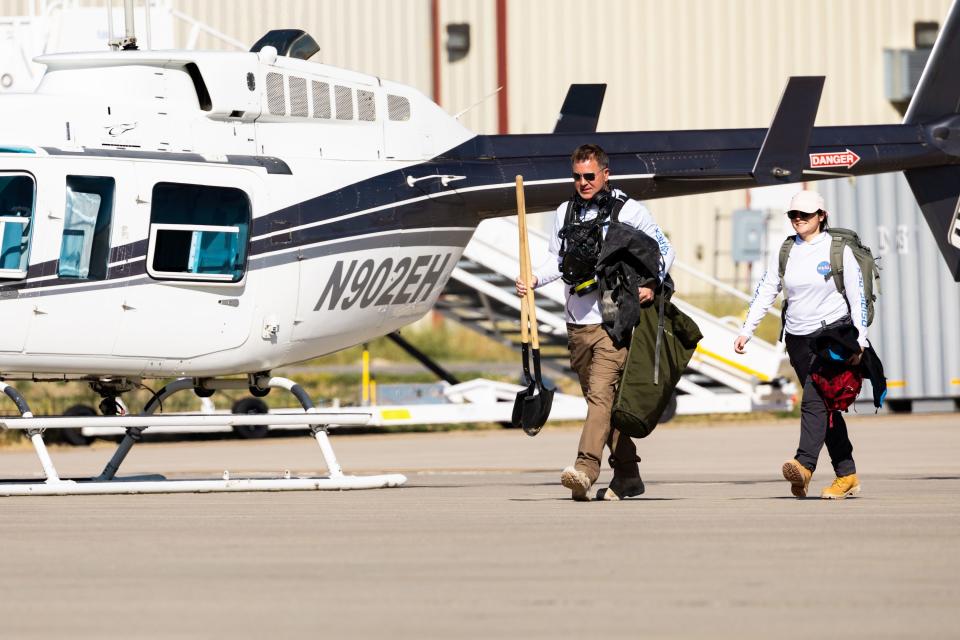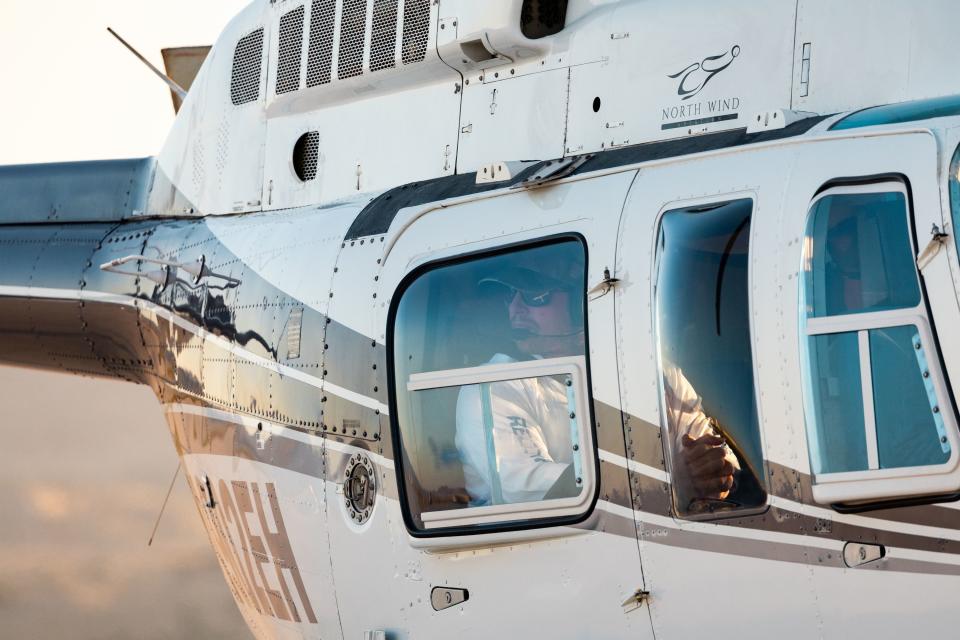‘The impossible became possible’: 4 billion miles later, NASA successfully lands asteroid sample capsule in Utah
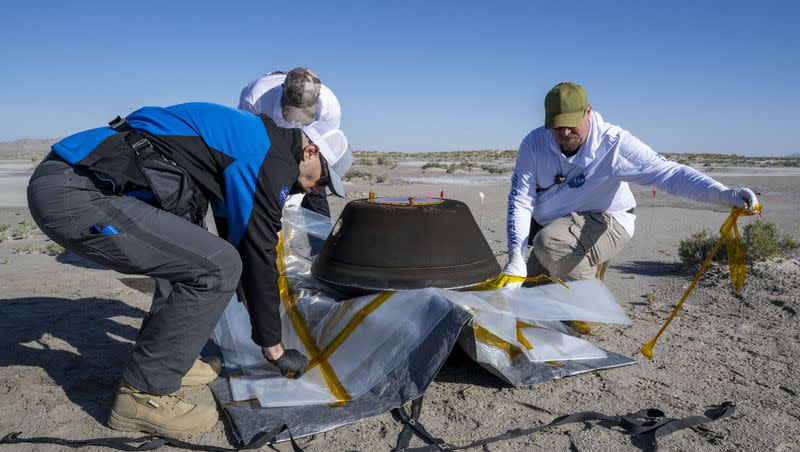
NASA scientists, military personnel and onlookers gathered at Dugway Proving Ground Sunday morning exploded into applause just before 9 a.m. local time as mission controllers confirmed a sample capsule, released by the Osiris-Rex spacecraft about four hours earlier, had survived a fiery reentry into Earth’s atmosphere and successfully landed on the soft and sandy soil of Utah’s west desert.
The diminutive pod, measuring about 1 1⁄2 feet by 3 feet and weighing in at around 120 pounds, was charred black after scorching through Earth’s upper atmosphere at more than 27,000 mph and experiencing forces 32 times stronger than the planet’s natural gravity before a bright orange and white parachute deployed, slowing the capsule from hypersonic speed down at a leisurely 11 mph before landing.
But the good-things-come-in-small-packages adage may have never been truer as the capsule contains a mere cup or so of material captured from a distant asteroid that will allow scientists to look back some 4.5 billion years. It is hoped to unveil new insight into the formation of the solar system and even the origins of water — and life — on Earth.
It's a story 4.5-billion years in the making. See what's next for the asteroid samples returned today by #OSIRISREx.
Post-landing news briefing: https://t.co/Tik2R4kU8t
Mission blog: https://t.co/Kb5TMjeMQ9 pic.twitter.com/Xq2uRLyl9e— NASA (@NASA) September 24, 2023
Shortly after confirmation of the capsule’s soft landing inside the boundaries of the Defense Department’s Utah Test and Training Range, about 80 miles southeast of Salt Lake City, NASA Administrator Bill Nelson celebrated the success and congratulated all of those involved in the $1 billion project that saw the Osiris-Rex spacecraft blast off from Kennedy Space Center over seven years ago.
“Congratulations to the Osiris-Rex team,” Nelson said via a NASA livestream Sunday morning. “You did it. You designed it. You built it. And you carried out the first (U.S.) mission to collect a sample from an asteroid. And after a two-year journey it has touched down at the Utah desert.
“It brought something extraordinary, the largest asteroid sample ever received on Earth. It’s going to help scientists investigate planet formation, it’s going to improve our understanding of asteroids that could possibly impact the Earth and it’ll deepen our understanding of the origin of our solar system and its formation.”
Related
High school students unveil new data on NASA’s earth-killer asteroid experiment
Earth strikes back: NASA successfully crashes spacecraft into asteroid in planetary defense test
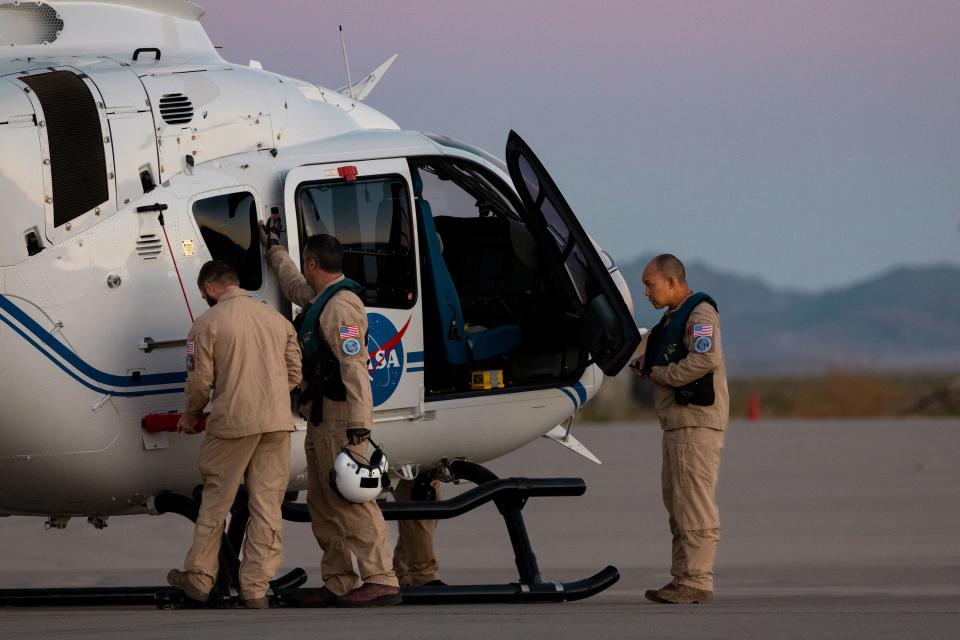
Osiris-Rex principal investigator and University of Arizona researcher Dante Lauretta was in one of the four helicopters, deployed from Dugway, that carried recovery team members to the sample capsule’s landing site in the Test and Training Range, about a 20 minute flight away.
Lauretta, who’s been involved with the project since 2004, described some stressful moments as he pondered all that could go wrong in the 13 minutes it took from the time the capsule entered Earth’s atmosphere until touchdown in Utah.
“It was pulse pounding ... waiting for that main chute to come out,” Lauretta said during a NASA press conference Sunday afternoon. “It worked and it worked spectacularly well.
“And, boy did we stick the landing. A few tens of feet off a nice road, the perfect place for the helicopters to land.”
The Osiris-Rex mission launched from Earth in 2016 on a journey that brought it to an orbit around Bennu in 2018. Bennu is a near-Earth asteroid, meaning it is on a path that orbits the sun. Bennu’s trek around the sun takes 435 days but every six years the asteroid passes relatively close — within about 186,000 miles — to Earth. For reference, that’s closer to Terra Prime than the moon. Ahead of the opportunity to evaluate material from Bennu, scientists have a wealth of information gathered by Osiris-Rex over the two years it circled and observed the asteroid.

NASA estimates the material sample will come in at just under 9 ounces. About 70% of the material will be saved for future study and the remainder will be shared among more than 200 researchers at 35 institutions around the world, including some at London’s Natural History Museum.
“OSIRIS-REx spent over two years studying asteroid Bennu, finding evidence for organics and minerals chemically altered by water,” wrote Ashley King, UKRI Future Leaders Fellow, Natural History Museum, in a web posting on Friday. “These are crucial ingredients for understanding the formation of planets like Earth, so we’re delighted to be among the first researchers to study samples returned from Bennu.”
At the Dugway command center on Sunday, Anjani Polit, mission implementation systems engineer for the Osiris-Rex mission, said that while scientists believe the capsule holds a sample weighing about 250 grams, or almost 9 ounces, of material from Bennu, the actual sample could be a bit smaller or larger.
“There is some uncertainty about how much we do have,” Polit said. “We believe it’s about 250 grams, but it could be plus or minus 101 grams.”
After the capsule was ferried to a building at Dugway via a cable attached to a helicopter Sunday morning, the craft was transferred into a temporary clean room where scientists were planning on removing the container that holds the sample and preparing it for transport to a laboratory at the Johnson Space Center on Monday.
Lauretta said the first “look” at how much sample was actually captured could come as early as Tuesday.
One of the huge advantages of the Bennu sample, from a research perspective, is that the material is “pristine” when compared to samples gathered from meteorites that have crashed to Earth and been contaminated by exposure to the planet’s atmosphere.
Osiris-Rex extended a vacuum tube to grab a material sample from Bennu in 2020, punching into the asteroid’s soft surface without actually landing on the space body, which is a loose amalgam of rocks, dust and debris held together by gravitational force. The dust and rubble captured by the Osiris-Rex mission from the Bennu asteroid, a top-shaped space rock that’s about one-third of a mile wide, isn’t just any random cosmic crud. The material that makes up Bennu is rich with carbon and possible organic compounds and is believed to be as old as the solar system itself.
At the time of its near-Earth flyby on Sunday, Osiris-Rex had traveled nearly 4 billion miles since its 2016 launch.
Beside its value to scientists as an accessible asteroid that contains material from the earliest days of the solar system, Bennu is also notable as one of the biggest known potential threats for a future collision with Earth.
Research from the Osiris-Rex scientific team estimates there is a 1 in 2,700 chance that Bennu could be on a course to impact earth exactly 159 years from this weekend’s expected landing of Osiris-Rex’s sample return capsule landing, on Sept. 24, 2182.
Polit said that Bennu’s status as a potential Earth-impactor elevates the importance of the information that’s already been gathered about the asteroid as well as what new insights the material sample will reveal.
“The planetary defense aspect is a really important aspect of this mission,” Polit said. “It’s really important to study Bennu ... to evaluate those risks. And also learning about its material properties. What it’s made of ... is information we could use to deflect an asteroid whether its Bennu or another asteroid in the future, if we need to.”

